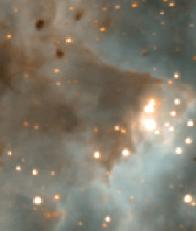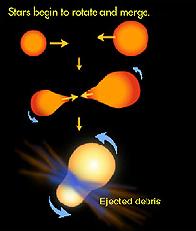5. Towards new challenges
The core collapse is only one feature of a self-gravitating
N-body system, but the variety of mechanisms are not
at all exploited.
In the particular case of star clusters the phenomena cover
a vast amount of territory, which are subjects of current
scientific research.
Some examples:
- A star cluster is never found isolated, but lives in the
tidal field of a host galaxy.
The tidal truncation intensifies the evaporation, because
the smaller the cluster becomes due to star loss, the more
inwards moves the tidal boundary giving rise to higher
evaporation rate.
- The masses of stars range according to a certain mass
spectrum, and intriguing questions touch the influence of
mass stratification on the collapse time.
After the heavy and inert stars have sunk to the center,
they kick out the lighter ones into the outskirts and shorten
the time of core collapse.
- Real stars do evolve, and in the course of their lifetime
they change their mass, their cross sections and orbits.
An evolved star is expected to affect interactions and vice versa.
In a binary system, it may fill the Roche lobe or dissipate
enough of its orbital energy to merge into a single high-mass
star.
- Globular clusters are on an orbit around the centre of the
Milky Way.
As they plunge through the disk plane, a disk shocking occurs.
This transient pertubation acts to compress the cluster and,
as a result, stars in the outer regions are accelerated and
escape.
- Other properties including star metallicty, age spread, radiation
from X-ray sources, anisotropic velocity distribution, cluster
rotation and countless other aspects...
... give just a small insight into the challenge, which theorist
as well as observers deal with.






 4. The core collapse
4. The core collapse
